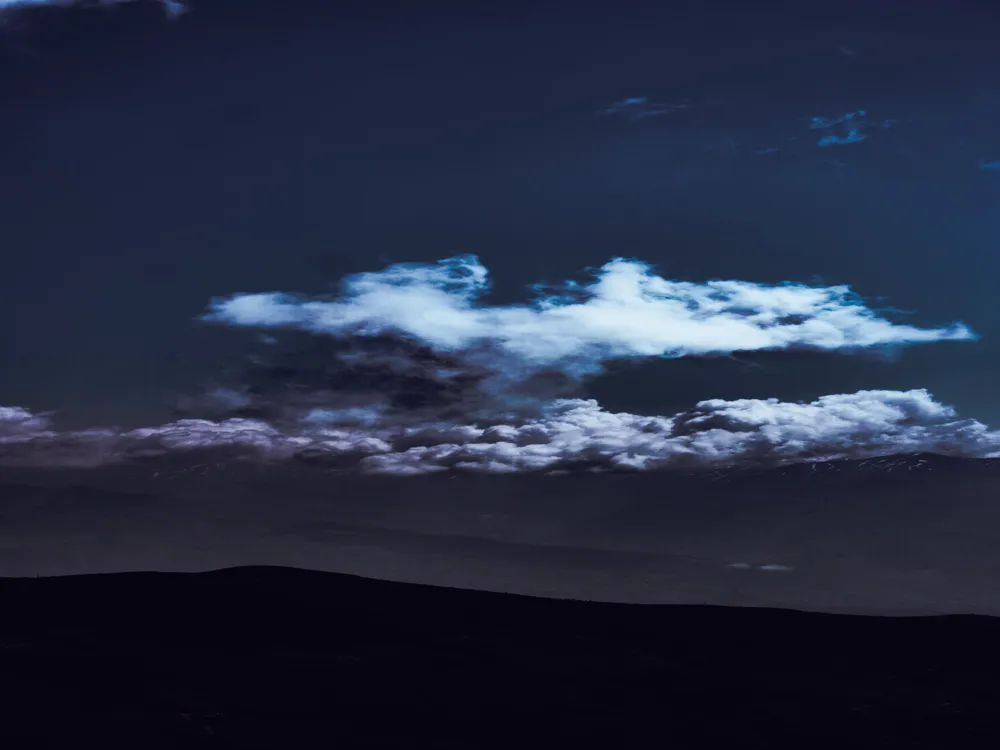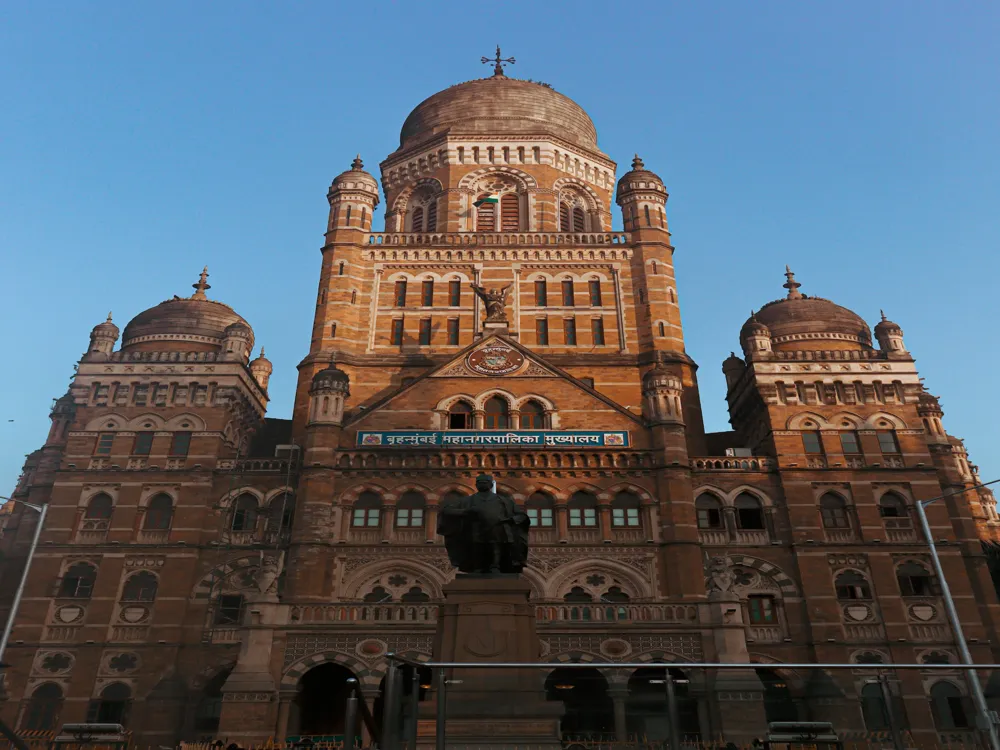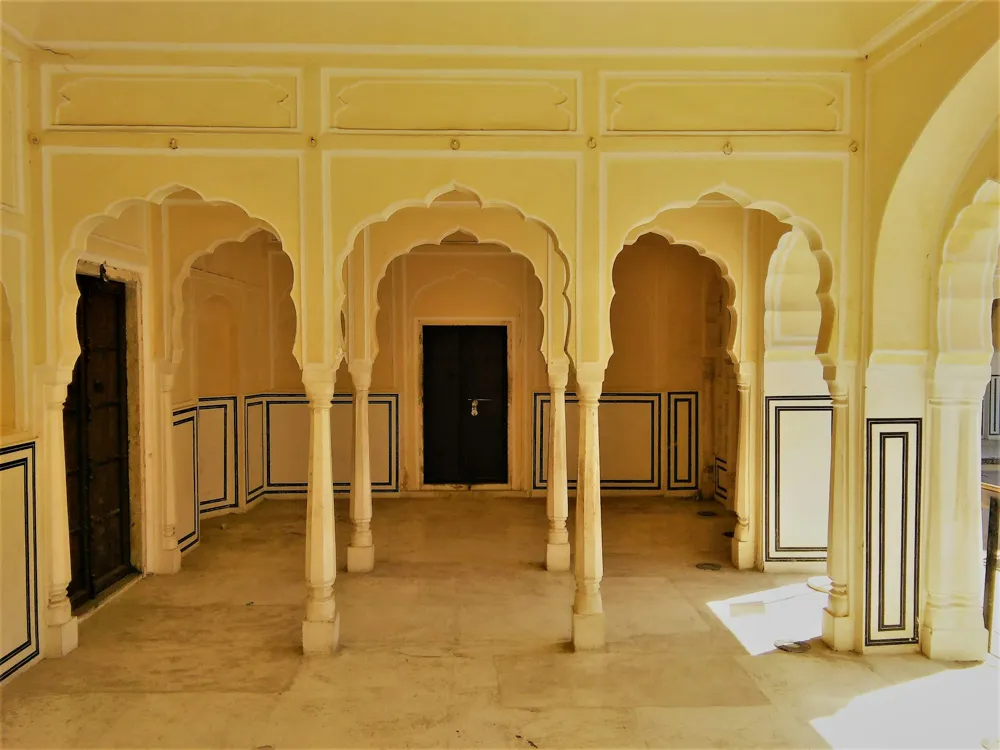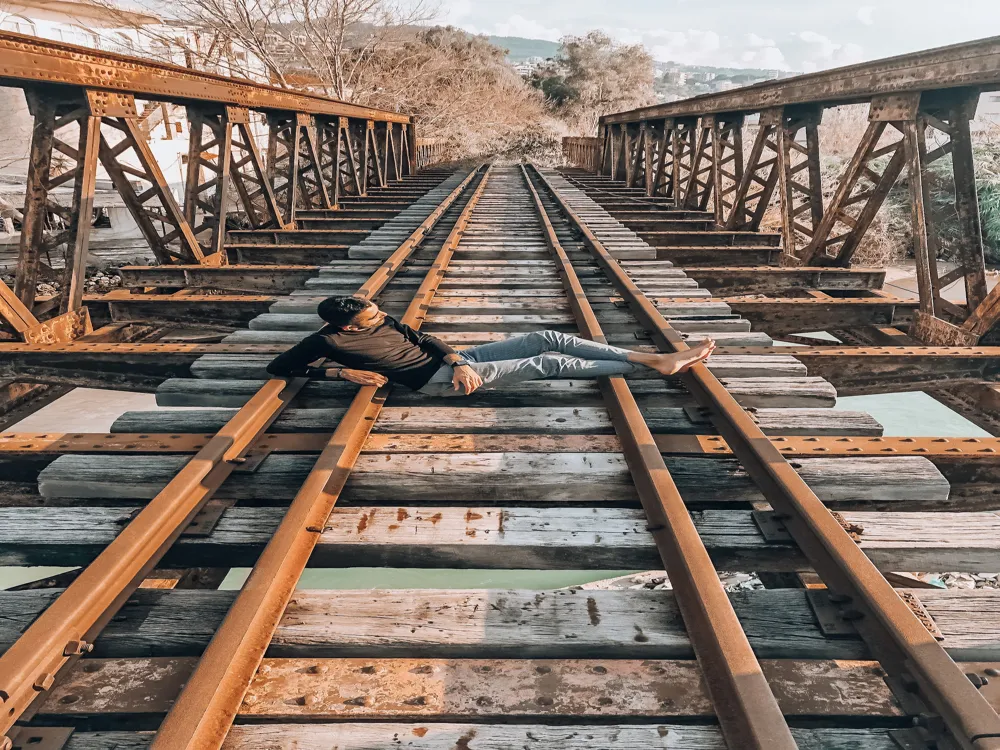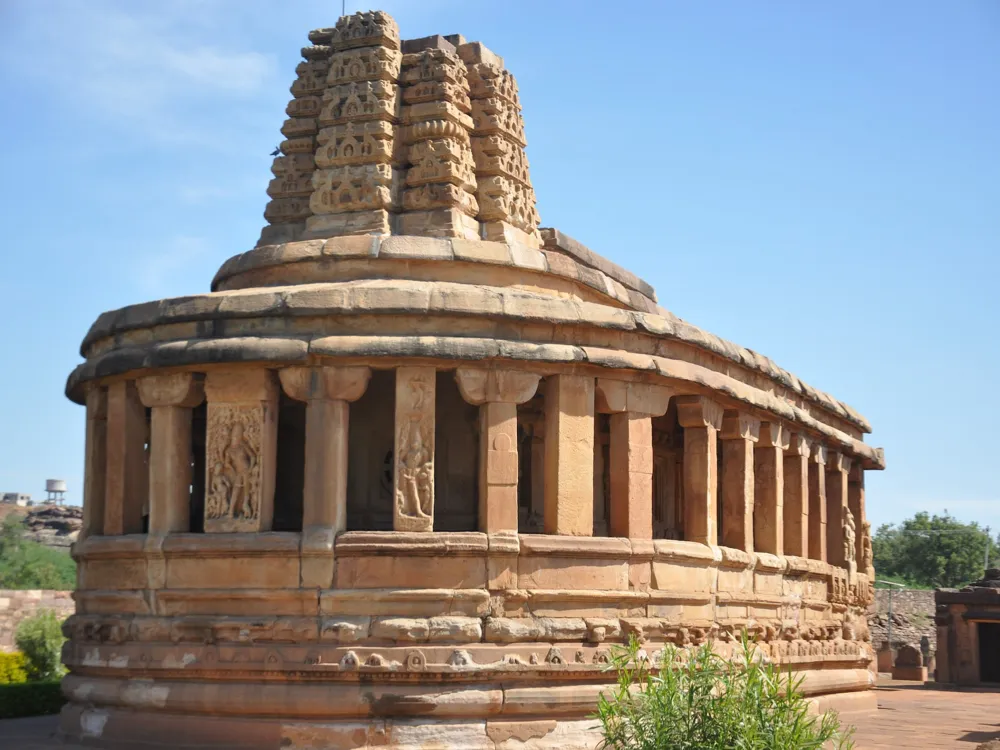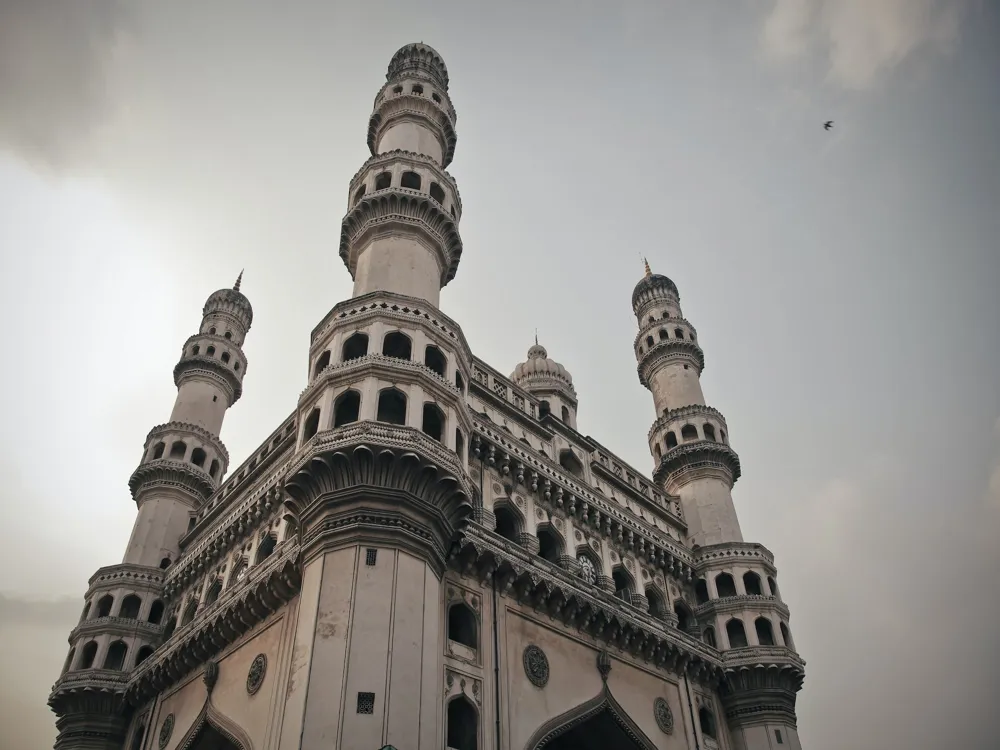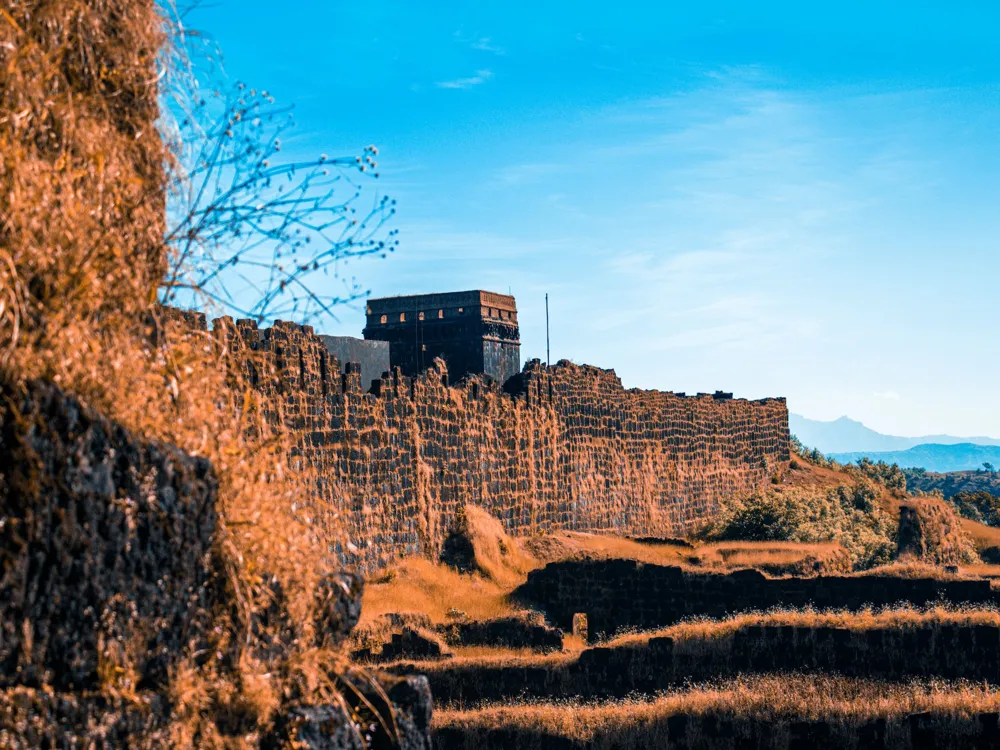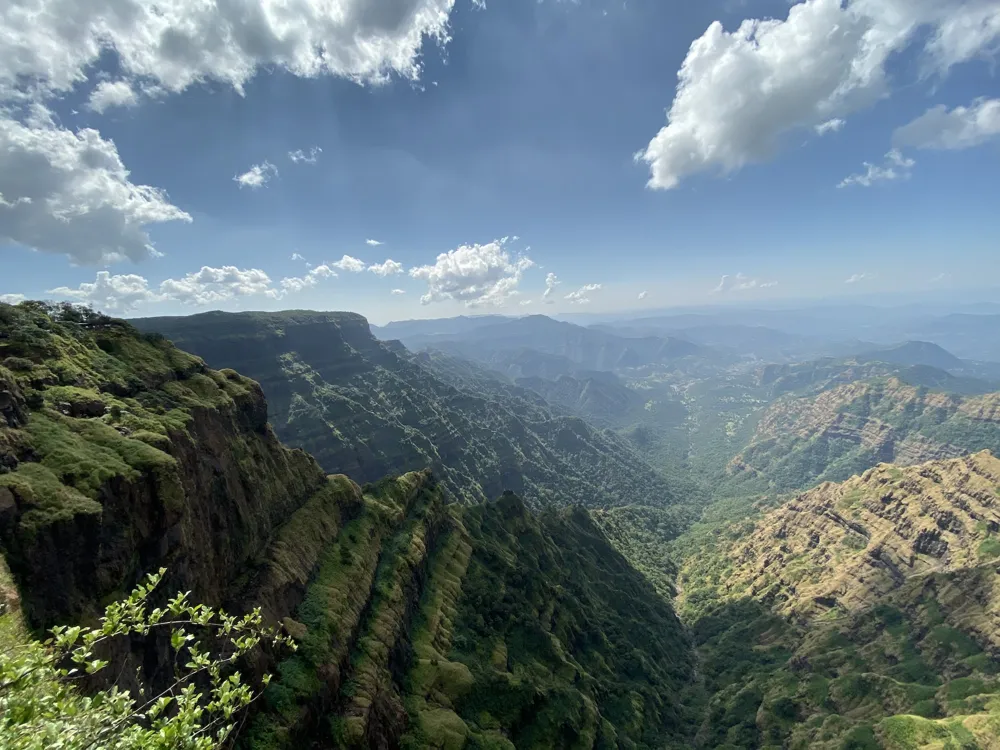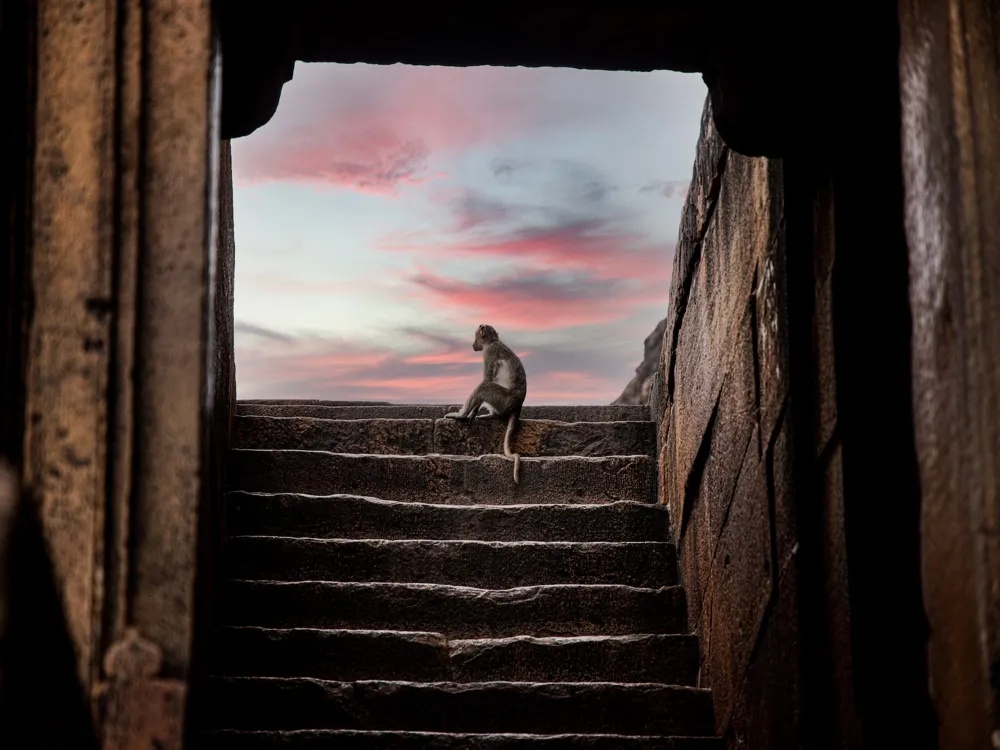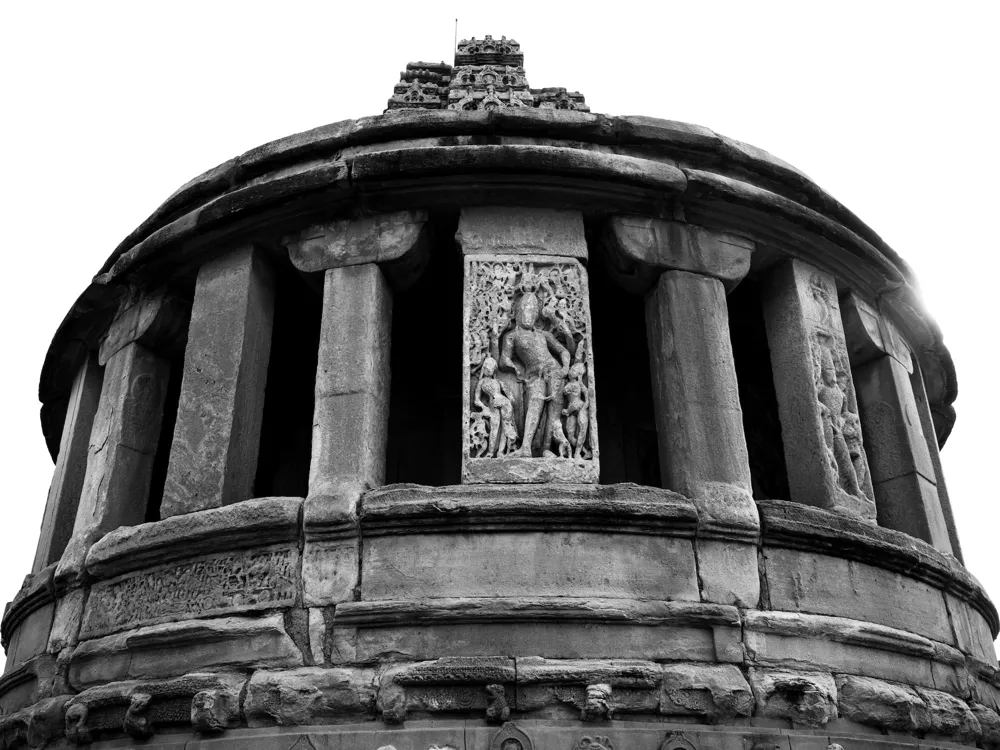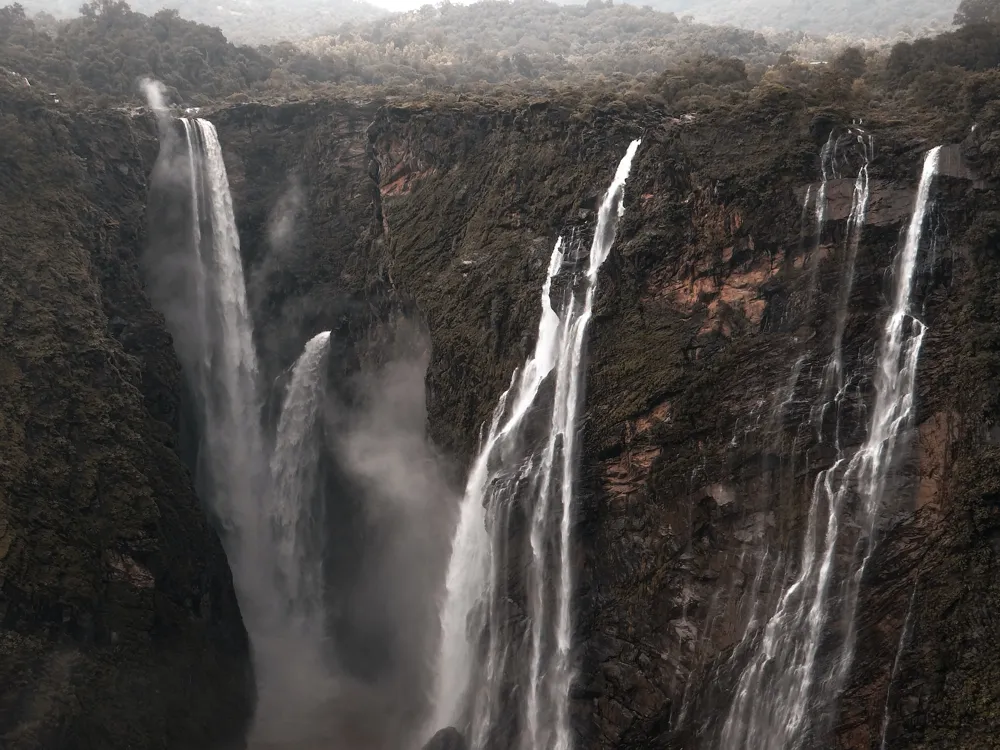Bara Kaman, an unfinished mausoleum of Ali Adil Shah II, is a historic gem nestled in the heart of Bijapur, Karnataka. Conceived in the late 17th century, this architectural wonder was intended to surpass the grandeur of all existing structures of its time. Despite its incomplete state, Bara Kaman captivates visitors with its unfulfilled dreams and architectural brilliance. The name 'Bara Kaman' is derived from the twelve arches that surround the tomb, which were originally planned to support a magnificent dome. The mausoleum was designed to house the remains of Ali Adil Shah II and his family. However, construction halted abruptly after the death of the Sultan, leaving the structure without a roof and the intended decorations incomplete. This halted endeavor adds a poignant aura to the site, making it a poignant symbol of unfulfilled ambition. The architecture of Bara Kaman is a harmonious blend of Indo-Islamic styles, reflecting the cultural amalgamation prevalent during the Adil Shahi dynasty. The remaining arches are built with dark basalt stone, intricately carved with Islamic calligraphy and designs. The layout of the structure is a testament to the advanced engineering and artistic skills of the era. Despite its unfinished state, the Bara Kaman is a profound example of the architectural grandeur of the Adil Shahi period. The architectural design of Bara Kaman is an exemplar of the Adil Shahi dynasty's vision and artistry. The twelve arches, made of finely chiseled basalt stone, are laid out in a rectangular pattern. Each arch stands tall, with intricate carvings and inscriptions that narrate stories of a bygone era. The interplay of light and shadow through these arches creates a mesmerizing effect, especially during sunrise and sunset. The central focus of the structure was meant to be the mausoleum, where a large dome was planned. The dome, had it been completed, would have been supported by the twelve arches, creating an imposing yet elegant structure. The mausoleum's design was intended to reflect the heavens, with a complex interplay of geometric patterns and motifs that symbolize the Islamic concept of paradise. The layout of Bara Kaman reveals an advanced understanding of geometry and symmetry. The architects of this era were masters in creating spatial harmony, which is evident in the proportional layout of the arches and the planned dome. The use of local basalt stone not only provided durability but also added a unique aesthetic with its dark, rich texture. The ideal time to visit Bara Kaman is between October and March when the weather is pleasant. Early morning or late afternoon hours are perfect for photography, as the play of light through the arches creates a stunning visual spectacle. As a historical monument, it's important to respect the site by not causing any damage. Avoid touching the delicate carvings and inscriptions, and adhere to any posted guidelines or instructions from the authorities. Opt for a guided tour to gain deeper insights into the history and architecture of Bara Kaman. Knowledgeable guides can provide fascinating details that are not commonly known. Bara Kaman is easily accessible from different parts of Karnataka. The nearest airport is in Belgaum, about 205 kilometers away. Bijapur has its own railway station, which is well-connected to major cities in India. For road travelers, Bijapur is linked with good motorable roads. Local transportation like auto-rickshaws and taxis are readily available for commuting within the city. Read More:Overview of Bara Kaman, Bijapur
Architecture of Bara Kaman
Tips When Visiting Bara Kaman
Best Time to Visit
Respecting the Site
Guided Tours
How To Reach Bara Kaman
Bara Kaman
Bijapur
Karnataka
NaN onwards
View bijapur Packages
Weather :
Tags : Historical Site
Time Required : 1 hr
Timings : 24 hours
Entry Fee : None
Planning a Trip? Ask Your Question
Bijapur Travel Packages
View All Packages For Bijapur
Top Hotel Collections for Bijapur

Private Pool

Luxury Hotels

5-Star Hotels

Pet Friendly
Top Hotels Near Bijapur
Other Top Ranking Places In Bijapur
View All Places To Visit In bijapur
View bijapur Packages
Weather :
Tags : Historical Site
Time Required : 1 hr
Timings : 24 hours
Entry Fee : None
Planning a Trip? Ask Your Question
Bijapur Travel Packages
View All Packages For Bijapur
Top Hotel Collections for Bijapur

Private Pool

Luxury Hotels

5-Star Hotels

Pet Friendly







